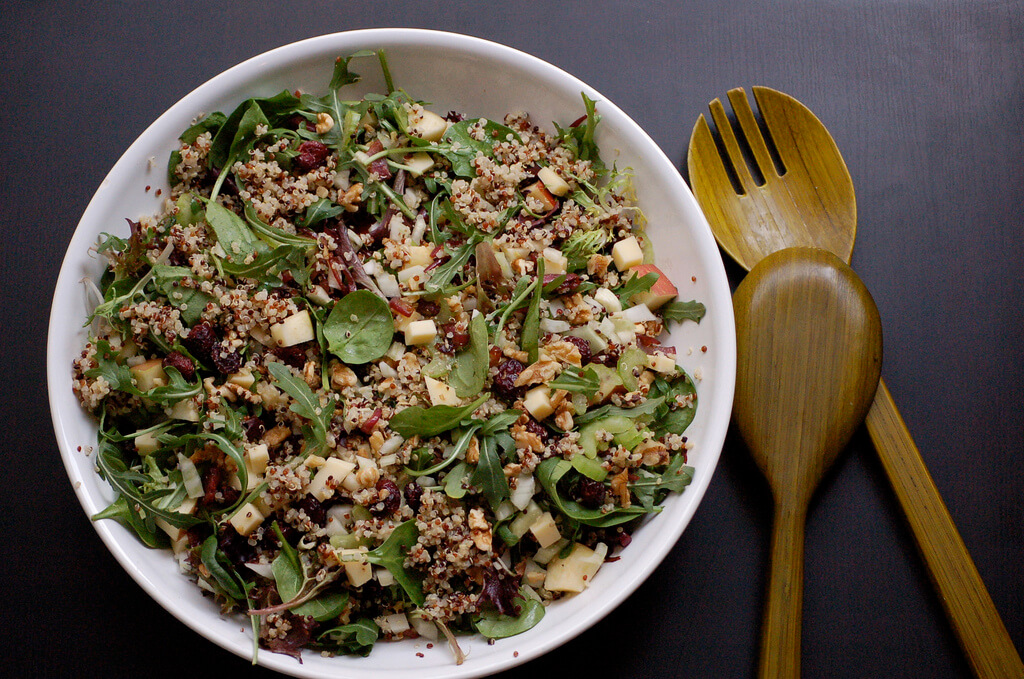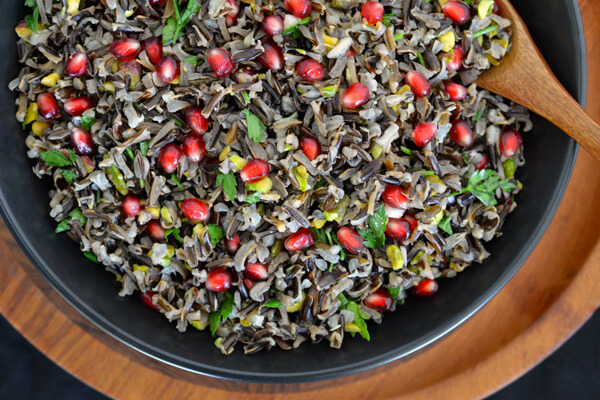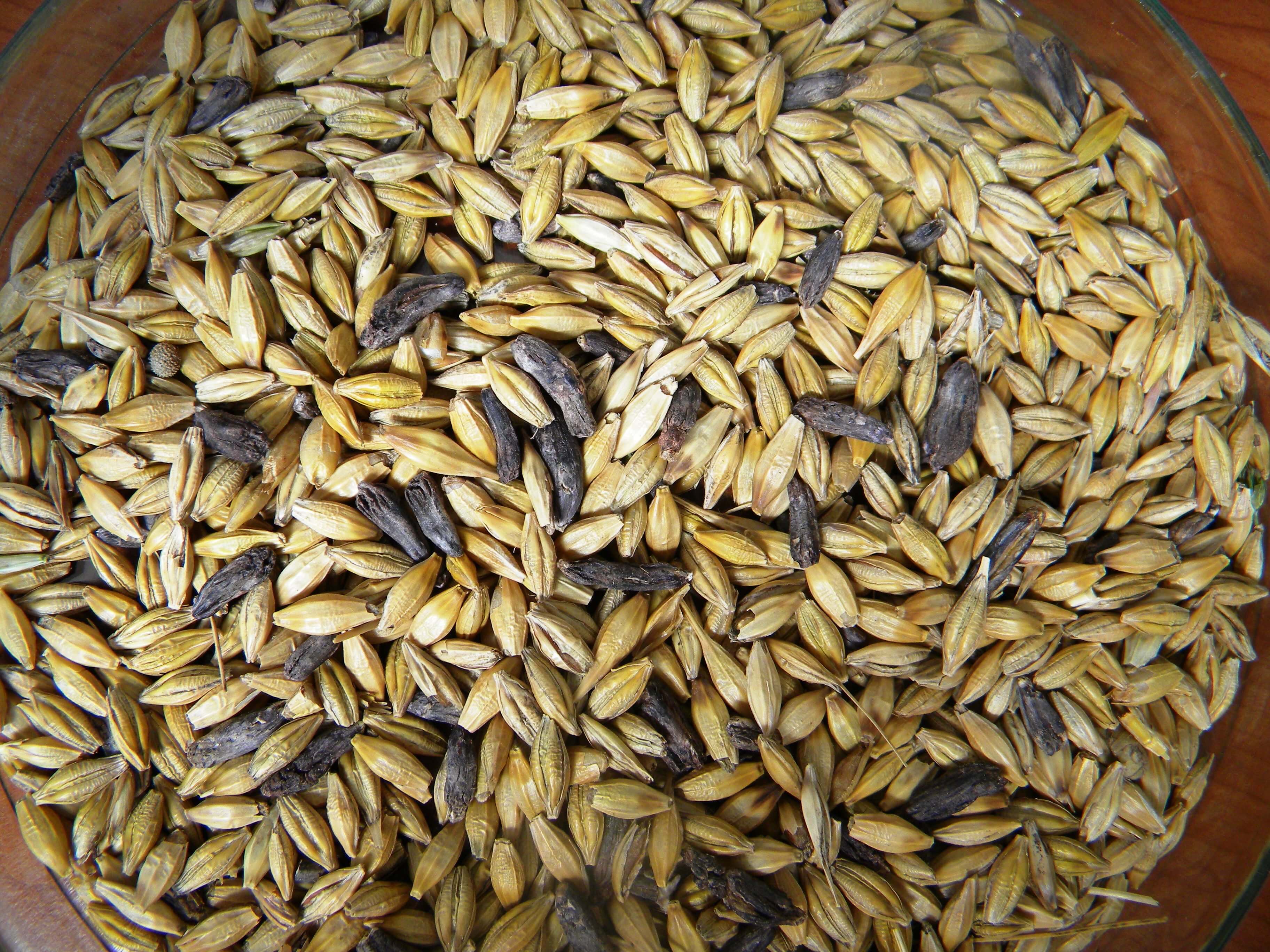3 Whole Grains to add to Your Diet
Why whole grains? Whole grains are just that. They consist of the entire grain seed, typically called the kernel. Unprocessed or minimally processed, whole grains are a fantastic source of vitamins, minerals, fiber, and an array of plant nutrients (phytonutrients). A daily intake of three ounces of whole grains per day is recommended by the USDA. Consuming three daily servings of whole grains have been shown to reduce the risk of heart disease, stroke, Type 2 diabetes, digestive system cancers and hormone-related cancers. This is because of the plant derived compounds (phytochemicals) and antioxidants they contain. Apart from fruits, vegetables and beans, the healthiest source of carbohydrates is whole grains. A balanced diet must include carbohydrates but that can be a confusing topic for many. Bear in mind that's it's more important to eat carbs from healthy foods than to be calorie-conscious and on a strict diet that limits carb intake. That is, the amount of carbs you're consuming is less important than the type of carbs you're consuming. Whole grains don't just mean bread. Here are some great whole grains that you can add to your diet and 2/3 are gluten-free. Quinoa Lots of people are unfamiliar with quinoa but this should change, as it's a grain jam-packed with nutrition and it's easily prepared. Quinoa is a protein-packed, gluten-free grain that looks a bit like cous cous. You can find it in creamy white or the less rare black or red but there's basically no difference between the varieties. White is the least crunchy and cooks the fastest. Qunioa contains almost twice as much fiber as most other grains. What's great about this grain is that it's as versatile as rice. You can eat it on its own as a side dish with some salt and pepper or seasoning, or toss it into a salad. Try it for breakfast with dried fruit, cinnamon and honey. Here are 15 creative recipes to inspire you. You can find a fantastic quinoa and tabouli recipe in our post Red Quinoa - The Bolivian Superfood.  Wild Rice Characterized by a distinctive nutty flavor, chewy texture and purplish colour, wild rice complements earthy, autumnal flavors and colors of harvest-time foods. It's gluten-free and it contains almost twice the protein and fiber as brown rice. It is also abundant in B vitamins, zinc, potassium, phosphorous, manganese and magnesium, while being fairly low in calories. Wild rice is typically scarified, which means the surface of the outer bran is mechanically scratched. This process lessens cooking time without sacrificing nutritional value, unlike with polishing grain like white rice. Try this delicious recipe for wild rice and mushroom pilaf.
Wild Rice Characterized by a distinctive nutty flavor, chewy texture and purplish colour, wild rice complements earthy, autumnal flavors and colors of harvest-time foods. It's gluten-free and it contains almost twice the protein and fiber as brown rice. It is also abundant in B vitamins, zinc, potassium, phosphorous, manganese and magnesium, while being fairly low in calories. Wild rice is typically scarified, which means the surface of the outer bran is mechanically scratched. This process lessens cooking time without sacrificing nutritional value, unlike with polishing grain like white rice. Try this delicious recipe for wild rice and mushroom pilaf.  Barley This wonderfully versatile grain graces the palate with a rich, nutty flavor and has a chewy, pasta-like consistency. Similar to wheat berries in appearance but slightly lighter in colour, sprouted barley is high in maltose, a natural sugar. It's a good source of manganese, dietary fiber, and selenium. It's commonly added to soups and can add a nice texture and heartiness to salads. Here are some recipe ideas for delicious heart meals to get you started. We also recommend trying an Almond Barley smoothie for a quick, high energy snack.
Barley This wonderfully versatile grain graces the palate with a rich, nutty flavor and has a chewy, pasta-like consistency. Similar to wheat berries in appearance but slightly lighter in colour, sprouted barley is high in maltose, a natural sugar. It's a good source of manganese, dietary fiber, and selenium. It's commonly added to soups and can add a nice texture and heartiness to salads. Here are some recipe ideas for delicious heart meals to get you started. We also recommend trying an Almond Barley smoothie for a quick, high energy snack.  Identifying Whole Grain Products The USDA recommends limiting consumption of refined grains and increasing whole grain intake so here's how you can identify products that contain whole grains. Train yourself to look for the Whole Grain Stamp, which indicates a product contains at least half a serving of whole grains (8 grams). Introduced by the Whole Grains Council, as of September 2015 the Stamp now appears on more than 10,500 products in 44 different countries. When it comes to shopping for whole grains, read food labels carefully to ensure that you aren't buying a product that's white or stripped of nutrients. The bread isle is notorious for misleading labelling. You want to look products that list "100 percent whole grain," "100 percent whole grain" or "whole wheat" as the first ingredient. "Multigrain" means there's more than one type of grain in the product, but it may not contain any whole grains. "Stoneground" means the grain has been coarsely ground and refined flour often appears as the first ingredient instead of whole grain flour. "Enriched flour", "bran" or "wheat germ" will never describe whole grains. The video below by the Anderson Cancer Centre does a great job in pointing out the importance of whole grains. We hope we've inspired you to try new types of whole grains or prepare them in new ways, to add balance and nutrition to your healthy lifestyle.
Identifying Whole Grain Products The USDA recommends limiting consumption of refined grains and increasing whole grain intake so here's how you can identify products that contain whole grains. Train yourself to look for the Whole Grain Stamp, which indicates a product contains at least half a serving of whole grains (8 grams). Introduced by the Whole Grains Council, as of September 2015 the Stamp now appears on more than 10,500 products in 44 different countries. When it comes to shopping for whole grains, read food labels carefully to ensure that you aren't buying a product that's white or stripped of nutrients. The bread isle is notorious for misleading labelling. You want to look products that list "100 percent whole grain," "100 percent whole grain" or "whole wheat" as the first ingredient. "Multigrain" means there's more than one type of grain in the product, but it may not contain any whole grains. "Stoneground" means the grain has been coarsely ground and refined flour often appears as the first ingredient instead of whole grain flour. "Enriched flour", "bran" or "wheat germ" will never describe whole grains. The video below by the Anderson Cancer Centre does a great job in pointing out the importance of whole grains. We hope we've inspired you to try new types of whole grains or prepare them in new ways, to add balance and nutrition to your healthy lifestyle.




